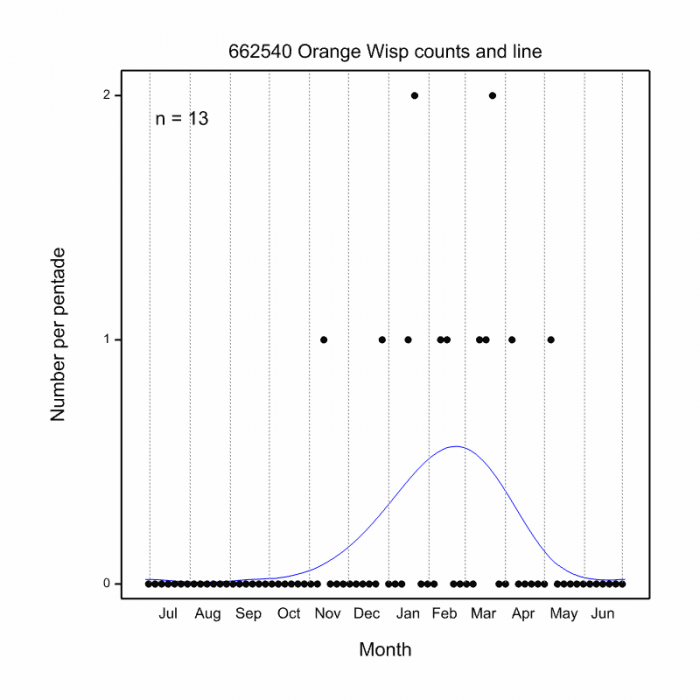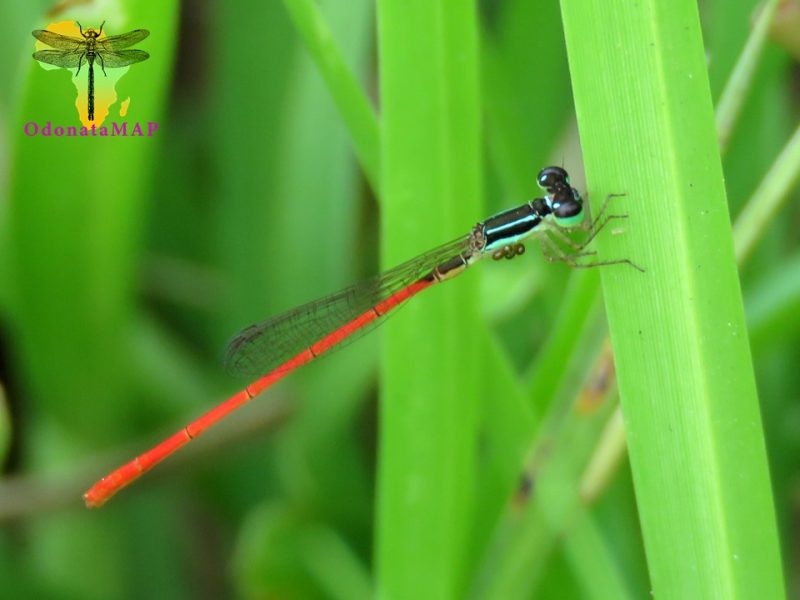View the above photo record (by Diana Russell) in OdonataMAP here.
Find the Orange Wisp in the FBIS database (Freshwater Biodiversity Information System) here.
Family Coenagrionidae
Agriocnemis ruberrima – ORANGE WISP
There are two distinct subspecies, Agriocnemis ruberrima ruberrima (NE South Africa) and Agriocnemis ruberrima albifrons (Botswana to Angola and Zambia). Further studies may find they are in fact separate species.
Identification
Tiny size
Length reaches 23mm; Wingspan up to 28mm.
Adult males are readily identifiable due to the almost luminous all orange-red abdomen.
Females are very similar in appearance to other Agriocnemis species and are best told by their association with the males.
Click here for more details on identification.
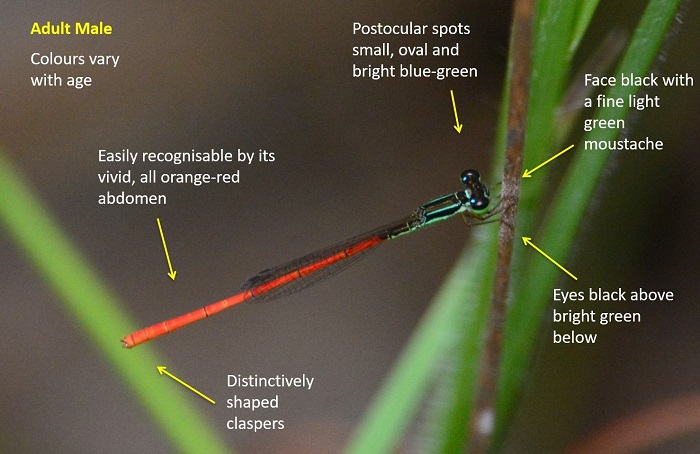
Kosi Bay, KwaZulu-Natal
Photo By Ryan Tippett
Habitat
Inhabits shallow, swampy and grassy fringes of seasonal ponds, pans and marshes. Most often found in open, coastal grassland areas.

Photo by Ryan Tippett
Behaviour
Inconspicuous due to its minute size and habit of sitting low down among grass stems above the water. They do not fly far once disturbed and quickly settle again on a grass stem. The females occur alongside the males.
Active from November to May (see Phenology below)
Status and Conservation
The northern albifrons subspecies is listed as of Least Concern in the IUCN Red List of Threatened Species. The South African ruberrima subspecies is uncommon and due to its small, restricted distribution is listed as Endangered on the Red List. Agriocnemis ruberrima ruberrima is intolerant of habitat degradation and only found in pristine habitat. A large amount of its range is currently protected within the iSimangaliso Wetland Park.
Distribution
Agriocnemis ruberimma albifrons occurs in the Okavango region of northern Botswana and in the Caprivi strip of Namibia. It is also found in northern Zambia and at a few scattered locations in Angola. The subspecies Agriocnemis ruberrima ruberrima has so far only been recorded from the coastal plain of north-eastern KwaZulu-Natal in South Africa. It could also occur marginally in neighboring southern Mozambique.
Below is a map showing the distribution of records for Orange Wisp in the OdonataMAP database as at February 2020.
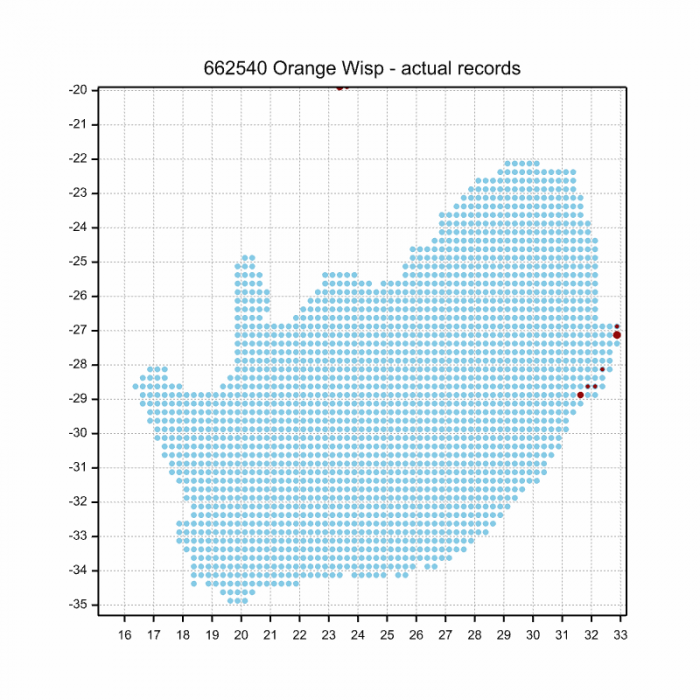
The next map below is an imputed map, produced by an interpolation algorithm, which attempts to generate a full distribution map from the partial information in the map above. This map will be improved by the submission of records to the OdonataMAP section of the Virtual Museum.
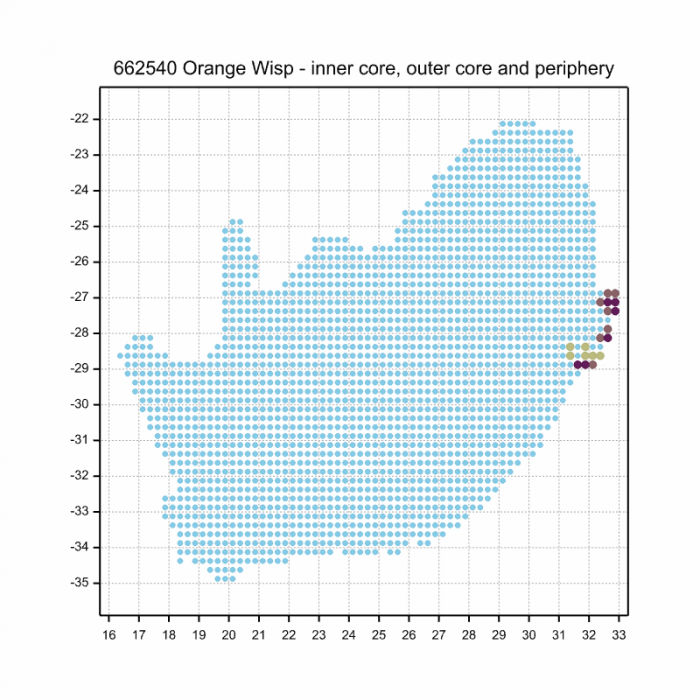

Ultimately, we will produce a series of maps for all the odonata species in the region. The current algorithm is a new algorithm. The objective is mainly to produce “smoothed” maps that could go into a field guide for odonata. This basic version of the algorithm (as mapped above) does not make use of “explanatory variables” (e.g. altitude, terrain roughness, presence of freshwater — we will be producing maps that take these variables into account soon). Currently, it only makes use of the OdonataMAP records for the species being mapped, as well as all the other records of all other species. The basic maps are “optimistic” and will generally show ranges to be larger than what they probably are.
These maps use the data in the OdonataMAP section of the Virtual Museum, and also the database assembled by the previous JRS funded project, which was led by Professor Michael Samways and Dr KD Dijkstra.
Phenology
